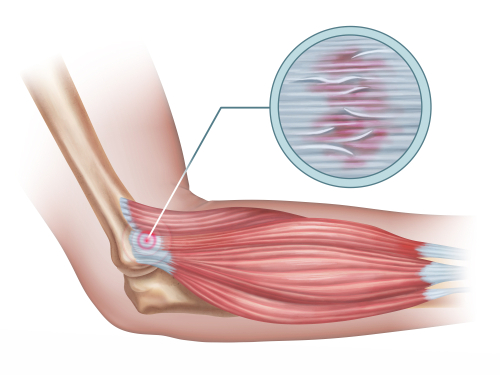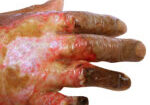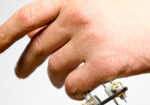Comparison of Interventions for Tennis Elbow aka Lateral Elbow Tendinopathy
Filed under Treatments, Uncategorized
Reference:
Lowdon, H., Chong, H. H., Dhingra, M., Gomaa, A.-R., Teece, L., Booth, S., Watts, A. C., & Singh, H. P. (2024). Comparison of interventions for lateral elbow tendinopathy: A systematic review and network meta-analysis for patient-rated tennis elbow evaluation pain outcome. The Journal of Hand Surgery, 49(7), 639–648. https://doi.org/10.1016/j.jhsa.2024.03.007
Brief Overview:
This Level 1 evidence article is a systematic review of treatments for tennis elbow also known as lateral epicondyle tendinopathy across various randomized controlled trials. The research aimed to identify which interventions provided the most benefits compared to any placebos for short-term (up to 6 weeks) and midterm (6 weeks up to 6 months) outcomes. In treating tennis elbow, a variety of interventions are typically used, including activity modification, physiotherapy, orthotics, medical treatments (including injection therapies), and surgery. The researchers of this study aimed to expand the evidence on this subject by comparing interventions to placebos and control groups.

Methods:
The evidence was collected following the Cochrane Handbook standard systematic review protocol. The study included a total of 13 randomized controlled trials (RCTs) and quasi-RCTs. Eligible criteria included adult patients aged at least 18 years, interventions (therapy, injection therapy, extracorporeal shockwave therapy [ECSWT], acupuncture/dry needling, and surgical release), control/placebo or other included intervention comparisons, PRTEE pain score, and sufficient data. The outcome measures were the Patient-Rated Tennis Elbow Evaluation (PRTEE) pain score, a validated 15-item questionnaire consisting of pain and function specific to lateral epicondyle tendinopathy.
Results and Conclusions:
Therapy and exercise showed improvement in the PRTEE pain score during midterm follow-up. The study showed that dry needling may yield potential short-term benefits, but individual response varied. Two injection therapies, autologous blood and steroid injections, improved PRTEE pain score at midterm follow-up. Orthotics, ECSWT, TENS, and surgery showed no statistically significant benefit according to the PRTEE pain score. Researchers concluded that the results should be interpreted with caution because of the limited amount of evidence that met the criteria. The optimal treatment for lateral epicondyle tendinopathy is still not concrete; however, physiotherapy or exercise is the intervention best supported by evidence.
Rating:
4/5 – This article is a Level 1 therapeutic evidence article, a high ranking of evidence. The authors considered the most common interventions and effectively discussed how the trials used supported their conclusions.
2 Comments
Leave a Comment
More To Read
Orthotic Options for Hand Burns
By: Sophia Grimm Hand burns can be very challenging to treat, and successful rehabilitation begins early after acute injury. Following a burn injury, scar contractures are the primary reason for the deformity of the hand. Therefore, proper orthotic intervention is key to preventing joint and ligament contractures (Kelly, Berenz & Williams, 2019). Splinting goals following…
Read MoreVagus Nerve Stimulation (VNS) for Various Etiologies
What is it: Vagus nerve stimulation (VNS) is a medical treatment that uses a device to deliver electrical impulses to the vagus nerve, which runs on both sides of the body from the lower brain through the neck to the chest and stomach. The left vagus nerve is typically used for this procedure, as simulating…
Read MoreMultiple Avenues of Pin Site Care in Hand Therapy
By: Megan Prather The prevalence of external fixation with pins in the upper extremity setting and the high rates of pin site infection make identifying a protocol for pin site care important for therapists. Across literature, there are many different pin site care protocols varying in frequency, solutions, materials, and manual cleaning. Despite many studies…
Read MoreCarpal Tunnel Treatment: Splinting Only vs Splinting & Conservative Treatment
Short-term clinical outcome of orthosis alone vs combination of orthosis, nerve, and tendon gliding exercises and ultrasound therapy for treatment of carpal tunnel syndrome. Sim, Sze En et al. Journal of Hand Therapy, Volume 32, Issue 4, 411 – 416 The Skinny- Carpal tunnel syndrome (CTS) is the most common compression neuropathy. Compression of the…
Read MoreSign-up to Get Updates Straight to Your Inbox!
Sign up with us and we will send you regular blog posts on everything hand therapy, notices every time we upload new videos and tutorials, along with handout, protocols, and other useful information.







Any details on the therapy and exercise used?
The meta analysis did state specific exercises as it reviewed several articles all with different exercises.